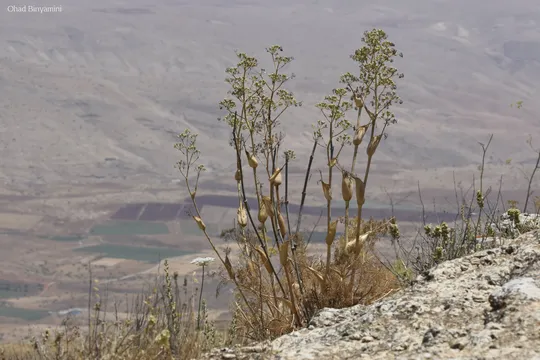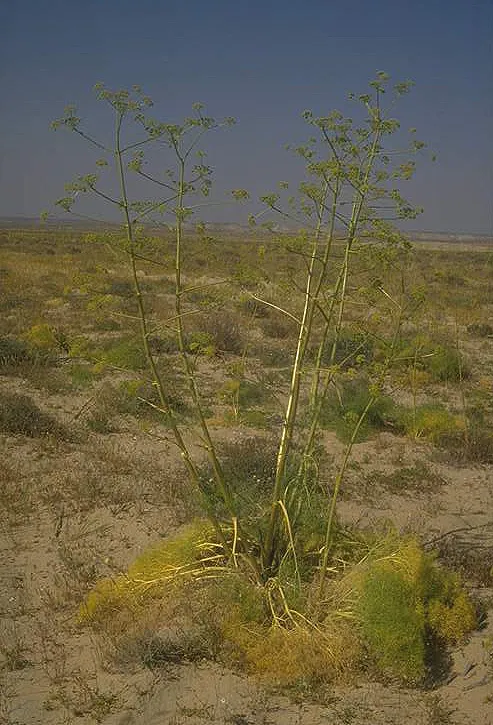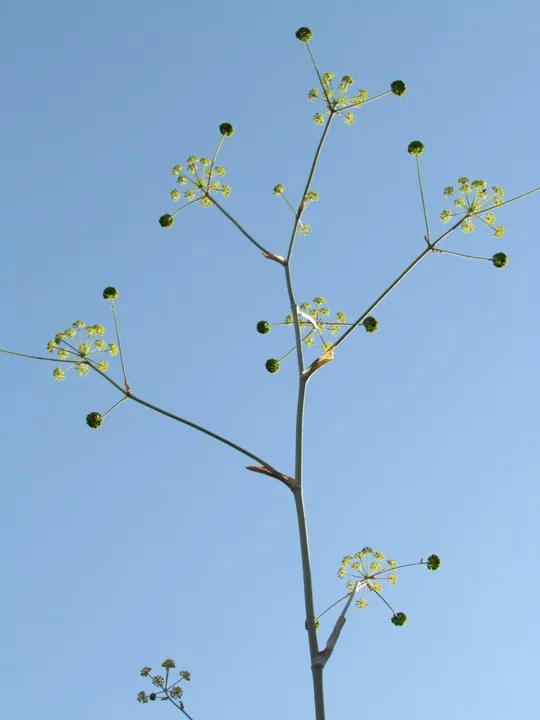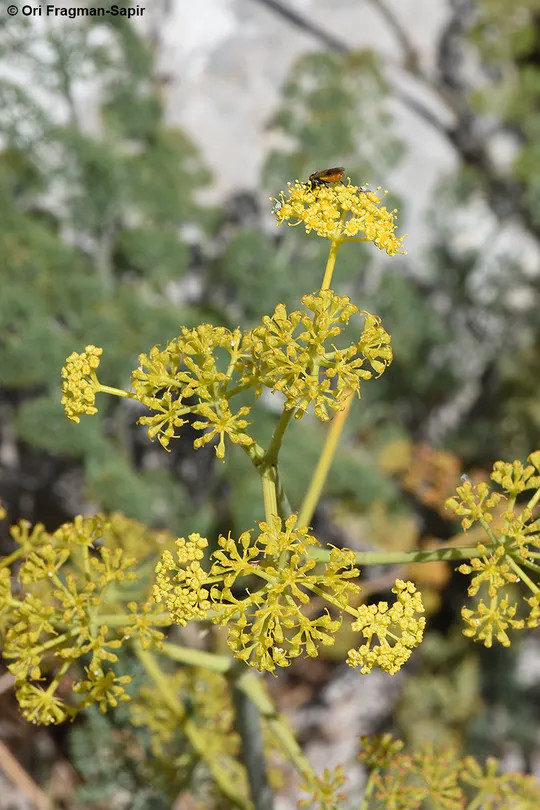Two-whorled Giant-fennel
Ferula biverticellata
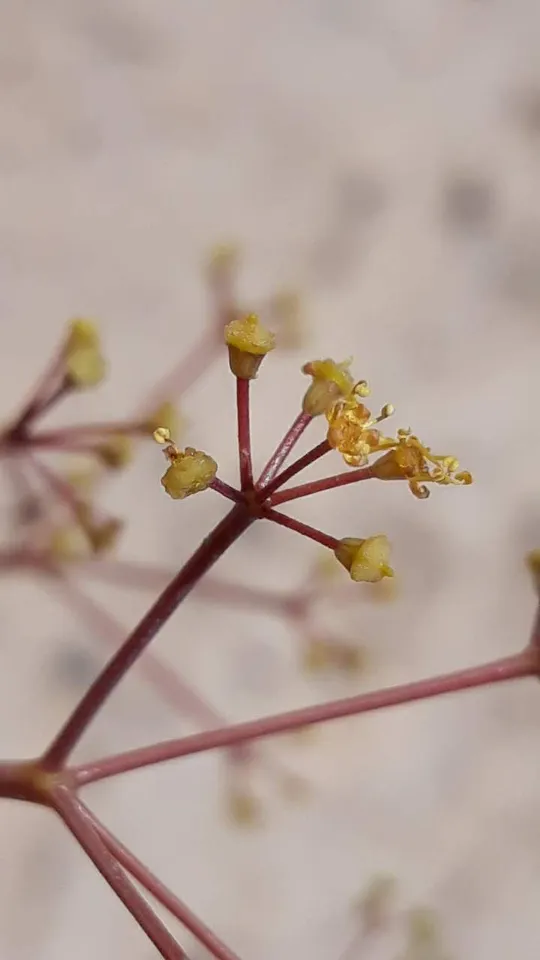
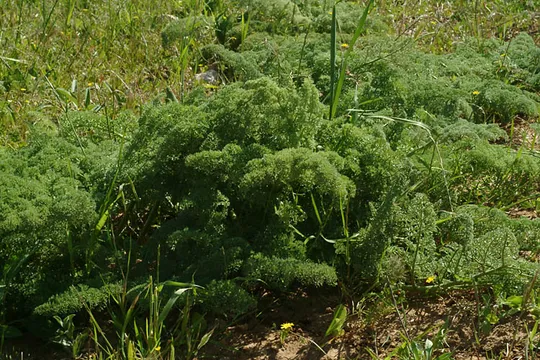
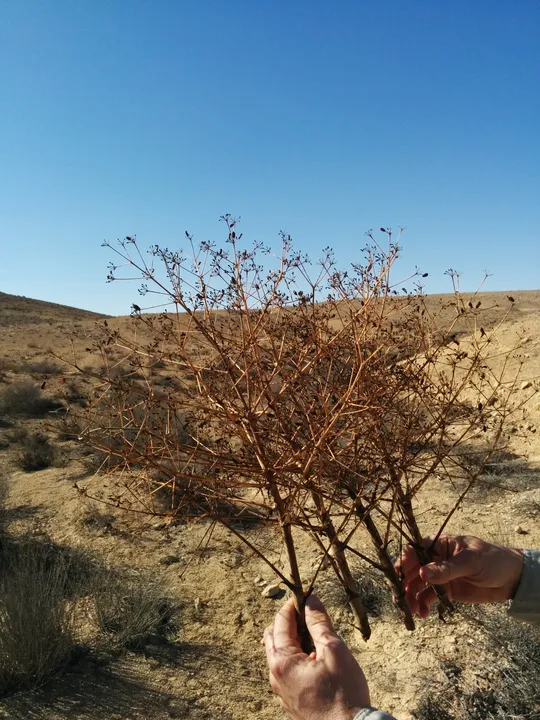
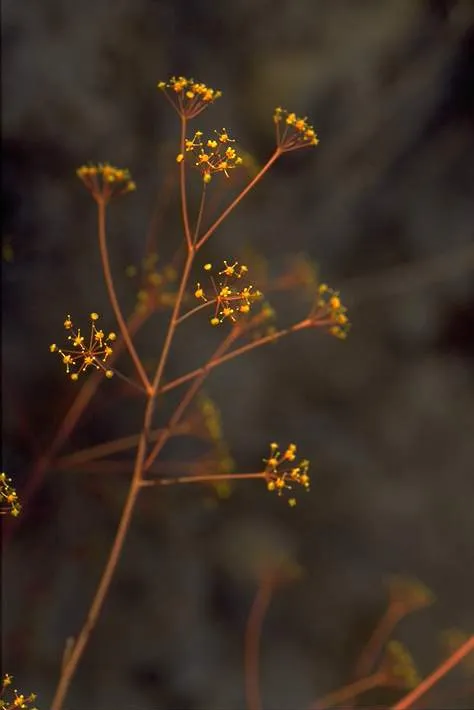
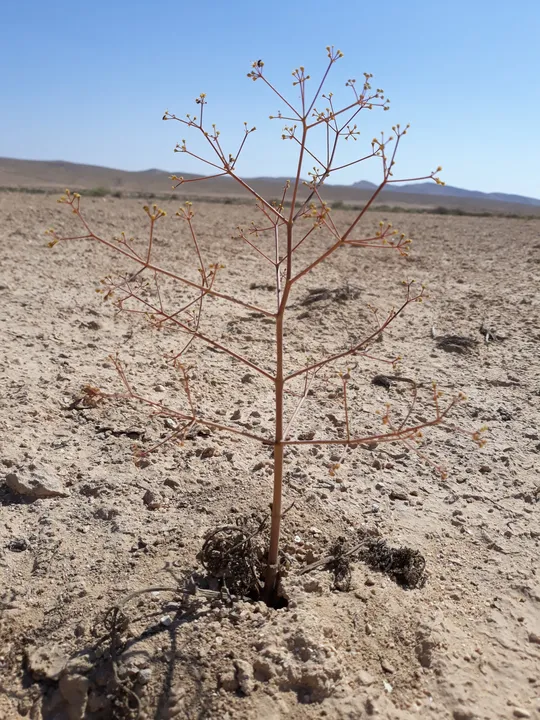
Ferula biverticillata is
found today in only two regions: the Negev Highlands and the Judean Mountains: In
the Negev Highlands, there is a large population in the upper Nitsana Stream,
about two kilometers southwest of the Lots Cisterns. Small populations were
found in the past near Mishor HaRuhot, in the Bor Nitsana and Mitspe Ramon. In the
southern Judean Hills, F. biverticillata grows on
the Ma'on Ridge, near Bet Yatir. The species is extinct in two regions: it was
collected in 1924-1941 in the Jezreel Valley, between Ǧenin
and Afula. All our efforts to find the plant in the 1970s (Schmida, 1982) were
unsuccessful. In the Flora Palaestina the plant is also noted from the Sharon
on heavy soils. Danin (2004) also records the plant from the Philistian Plain
and from the Carmel.
The plant is fairly common on the Israeli part of Mount Hermon,
and was collected also north and west of the Hermon between the town of Rahela
to the summit.
Loess valleys and
wadis in the Negev Highlands. Brown alluvial soil in the high transition zone
of the Ma'on Ridge, at altitudes above 800 meters. On Mount Hermon, Ferula
biverticillata is common at altitudes of 1500-1900 meters, where it
grows on rocky limestone or hard dolomite slopes. This habitat is very
different from that of the Negev Highlands and certainly that of the Jezreel
Valley. In the Horan, it grows on basalt.
For the genus – see Ferula daninii.
F. biverticillata plants that
grew in the past near Ǧenin
and in the Sharon have a characteristically large fruit (13 mm), with three
prominent dorsal ribs, and this feature distinguishes them from the Negev
populations. Therefore, we thought to separate the populations of the Negev and
describe them as a separate, independent species F. hermonis (Schmida,
1982). The Hermon is one of two places from which Thieb first described Ferula
biverticillata. Therefore, it was important to compare the Negev populations
to the populations of the Hermon. In the autumn of 2005 there was extensive
flowering on the slopes of Mount Hermon. When the flowers were compared to
those from the Negev and Ma'on Ridge populations, almost no differences were
found. The unique population was in fact the Ǧenin
population, which is long extinct.
·
Ferula biverticillata once grew at 10 sites, of which six are extinct. All the sites
in the Jezreel Valley and the Sharon have become extinct due to development or pesticide
use. In the Negev Highlands, the site near the “Officers' Cisterns” (7 km North
of Mitspe Ramon) is extinct; the populations in Mitspe Ramon and Mishor
HaRuah are threatened by vehicular training
exercises. In effect, only two large
populations remain – in upper Wadi Nitsana (near the zeppelin), and near Bet
Yatir in a plowed field.
·
The
Wadi Nitsana population includes hundreds of plants, and is observed each year in
full bloom. The population of Bet Yatir is seriously threatened by development.
A field survey should be conducted to find all the Ferula
biverticillata sites in the Negev Highlands and the Ma'on Ridge. The Wadi
Nitsana population should be demarcated and monitored the Bet Yatir population should
be declared a nature reserve.
Ferula biverticillata is endemic
to the Levant: it grows in Israel and Syria – in the Anti-Lebanon Mountains, in
the Horan (from where it was first described) and in the Syrian Desert. It has
not been collected on the high steppes in Jordan, an area in which most of the unique
plants of the Negev Highlands are found (Thalictrum isopyroides, Tulipa
polychroma, Bromus danthoniae, Hapolphyllum poorei, Tanacetum sinaticum and
Arabis auriculata).
Ferula biverticillata
is a perennial herbaceous species that functions as tumbleweed (the whole plant
is dispersed by the wind). Grows mainly in deep soil in the high transition
zone and on Desert Mountains. F. biverticillata
is endemic to the Levant, and in Israel, it is a relict of the high Levant Mountain
vegetation and a northern peripheral species, associated with the large
populations on the Hermon. It is extinct in the heavy soils of the Sharon, Samaria
and the Jezreel Valley due to agricultural development. The species is
threatened by habitat disturbance and degradation in the southern Judean
Mountains and in some of the Negev Highland sites as well.
שמידע, א. 1982. כלך הרמון. רתם 4: 32-39.
Current Occupancy Map
| 1000 squre meter pixel | 5000 squre meter pixel | 10000 squre meter pixel | |
|---|---|---|---|
| number of observations | 0 | 0 | 0 |
| in total pixels | 0 | 0 | 0 |
| Family | Apiaceae |
| Classification | On the near threatened species list |
| Ecosystem | High Semi Steppe |
| Chorotype | Eastern Mediterranean |
| Conservation Site | Upper Wadi Nitsana |
| Rarity |
1
2
6
|
|---|---|
| Vulnerability |
0
1
4
|
| Attractiveness |
0
0
4
|
| Endemism |
0
1
4
|
| Red number |
1
2.6
10
|
| Peripherality | N |
| IUCN category | DD EW EX LC CR EN VU NT |
| Threat Definition according to the red book | Endangered |
 Based on:
Based on:
